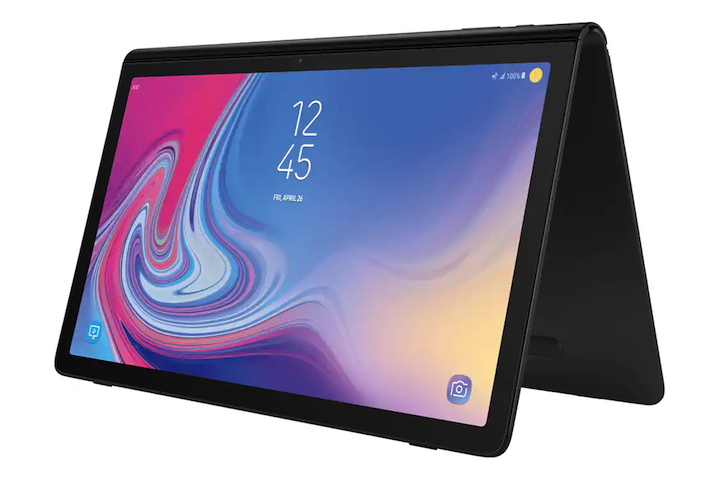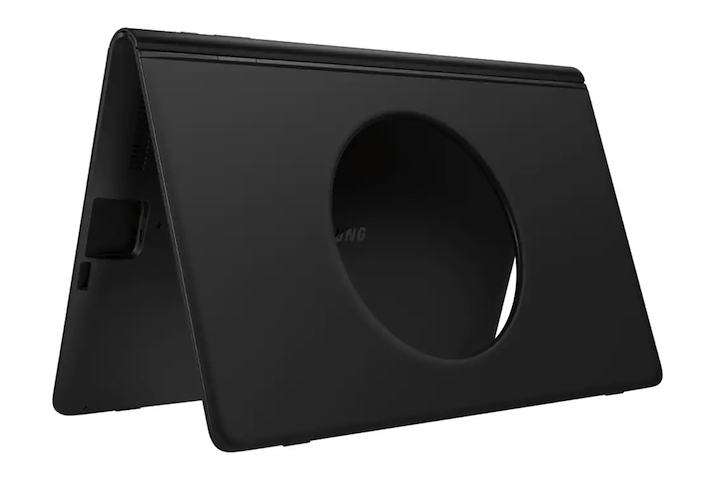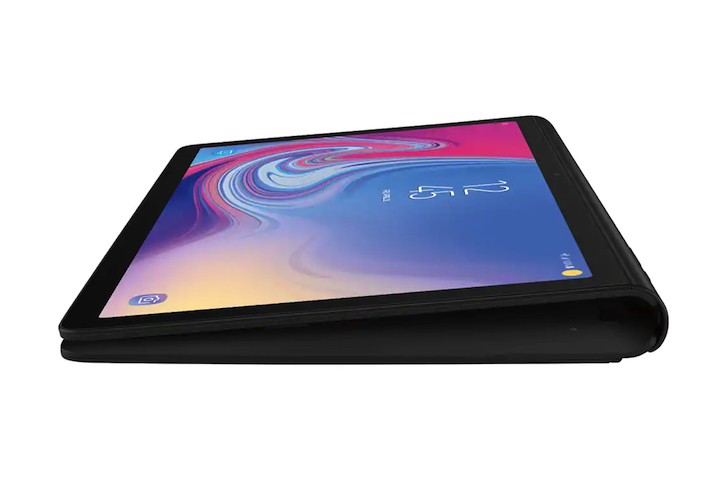Remember the Samsung Galaxy View? No, we had to go back and check, too. It was a massive, odd, not-a-tablet-honest … um, tablet-like device that was supposed to be used as a TV released at the end of 2015 and cost $600. Now, Samsung has made a sequel, the Galaxy View 2, which arrives more than three years after the first version. Nothing says pent-up demand like a three-year gap between versions.
What is the Galaxy View 2? It’s a 2-in-1 style tablet with a Galaxy Fold-style curved hinge along the top edge that’s designed to operate as a portable TV with both a 4G LTE and a Wi-Fi connection, or as a big-screen tablet. How big? The screen is 17.3 inches and has a 1080p resolution, while the body is considerably larger than a big tablet like the 12.9-inch Apple iPad Pro. While Apple’s large slate is 11 inches by 8 inches, the Galaxy View 2 is a giant 16 x 10. It’s also very heavy at 2.2 kg, compared to Apple’s 631-gram iPad. Make no mistake, the Galaxy View 2 is huge.
It’s a good thing the screen is attached to a full-size kickstand, which, when folded down, does not lay flat against the back of the screen, and instead still angles the device for typing, scribbling with a stylus, or watching videos. The kickstand has a big hole in the middle, and not the weird built-in handle on the original Galaxy View. Part of the size and weight of the Galaxy View 2 is because of the 12,000mAh battery for 45 hours of standby.
A portable TV needs content, and this comes from AT&T’s DirecTV service, which has a dedicated button on-screen, and there’s 64GB of internal memory and a MicroSD card slot to increase this further. The rest of the technical specifications include a Samsung Exynos 7884 processor — also found in Samsung’s Galaxy A20 smartphone — and 3GB of RAM. It doesn’t have a rear camera, because that would be silly, but it does have a video call camera on the front. Four speakers and Dolby Atmos support takes care of the audio.
The Galaxy View 2 can be purchased through AT&T, where it’s available outright or on a monthly plan. Pay for the Galaxy View 2 outright and it’s yours for $740, or opt for a contract and you’ll spend $37 per month over the next 20 months for it. Order now, and the Galaxy View 2 will arrive the same week. It’s a difficult time for Samsung, and announcing a new mobile product that folds, just not in the way we expect in 2019, may help take some of the attention away from the now-delayed Galaxy Fold. The Galaxy View 2 is bizarre enough to do that, but how many people have been waiting for a larger, thicker, less-portable tablet, which is more like a TV that’s too small or a tablet that’s too big?
Updated on April 29, 2019: Added official release news.
Editors' Recommendations
- Every Android tablet we’re expecting in 2024
- Every foldable phone we’re expecting in 2024
- Galaxy AI is now available for these other Samsung phones
- Should you buy the Samsung Galaxy Z Fold 5 or wait for the Z Fold 6?
- These Samsung phones are getting a big update this month







